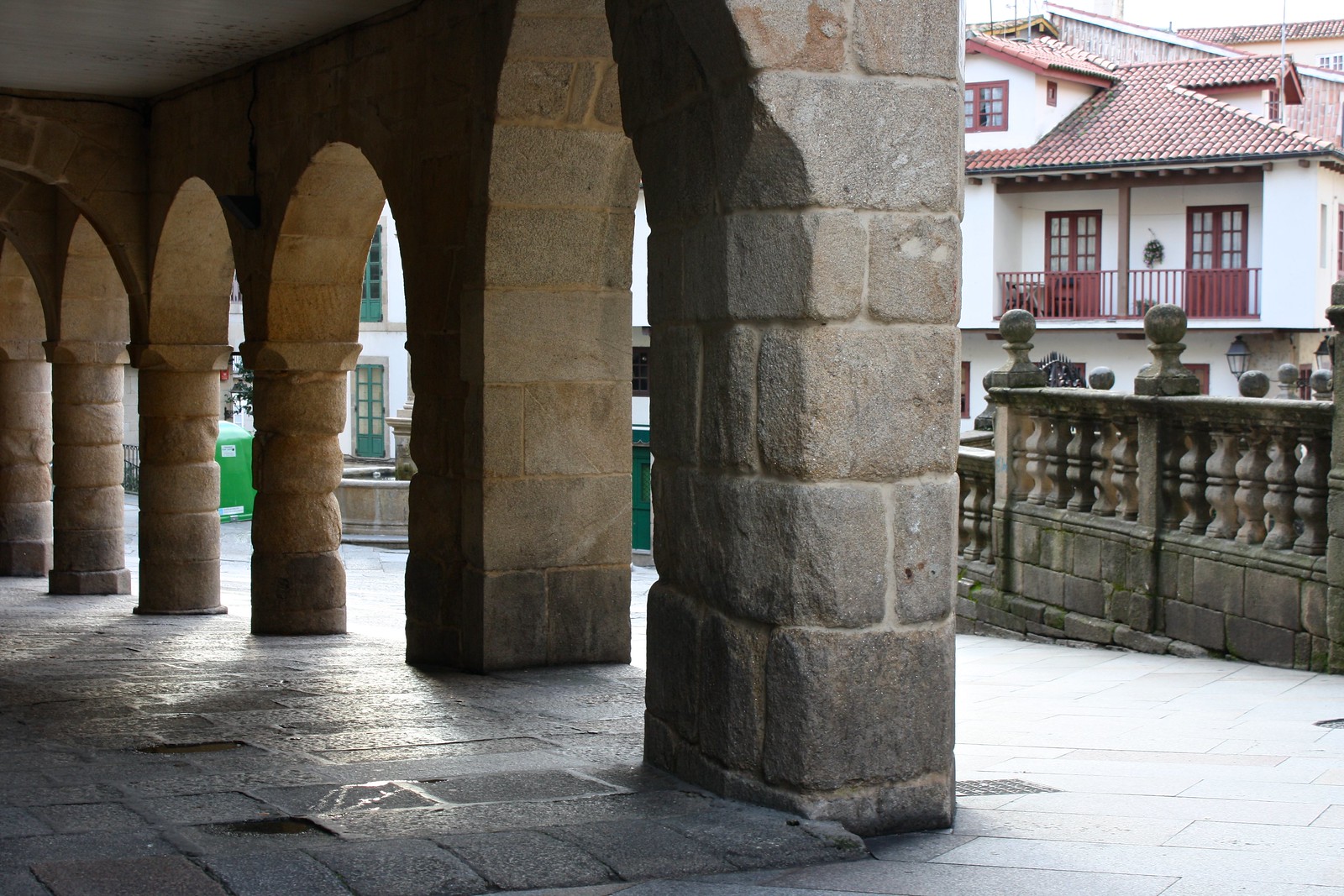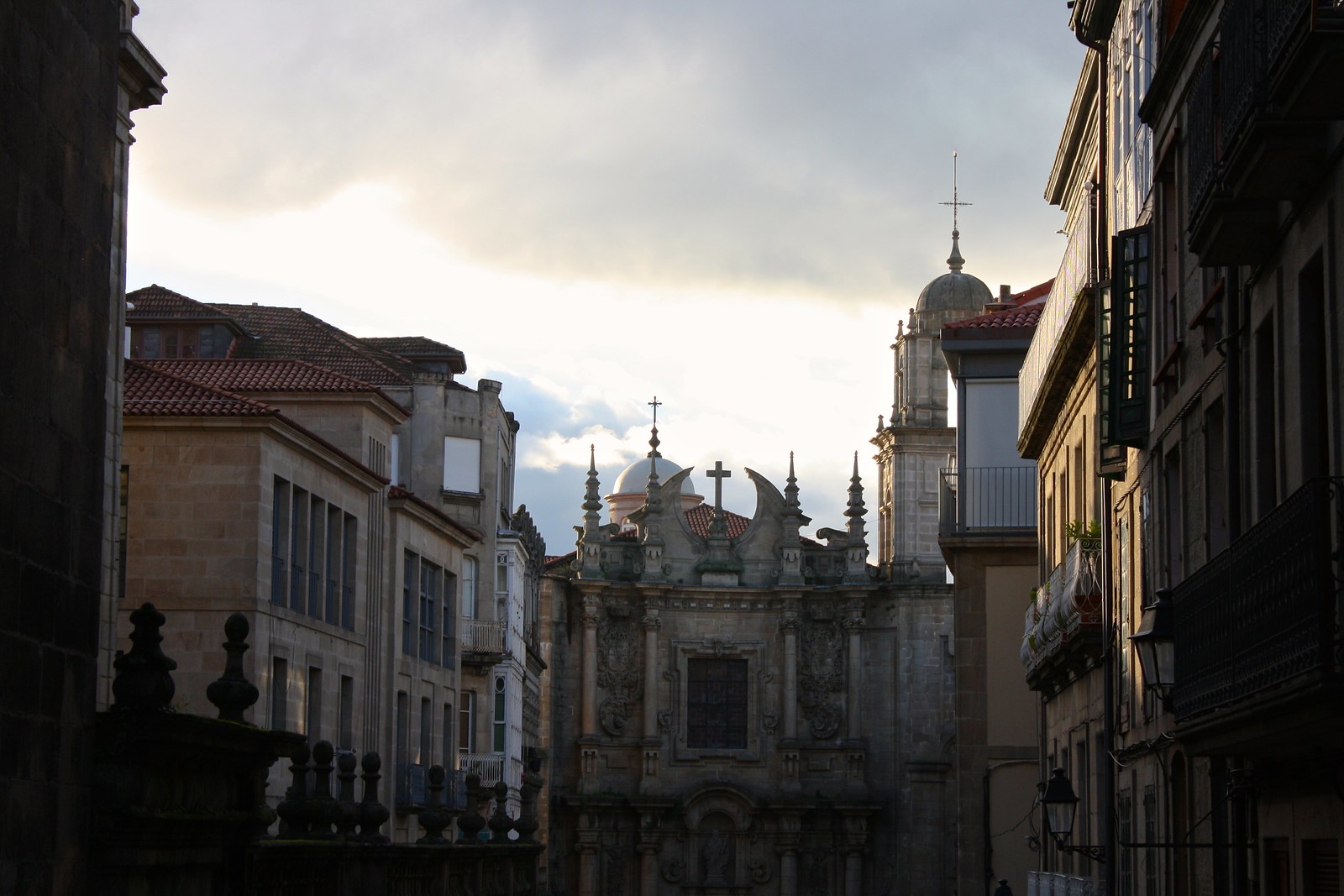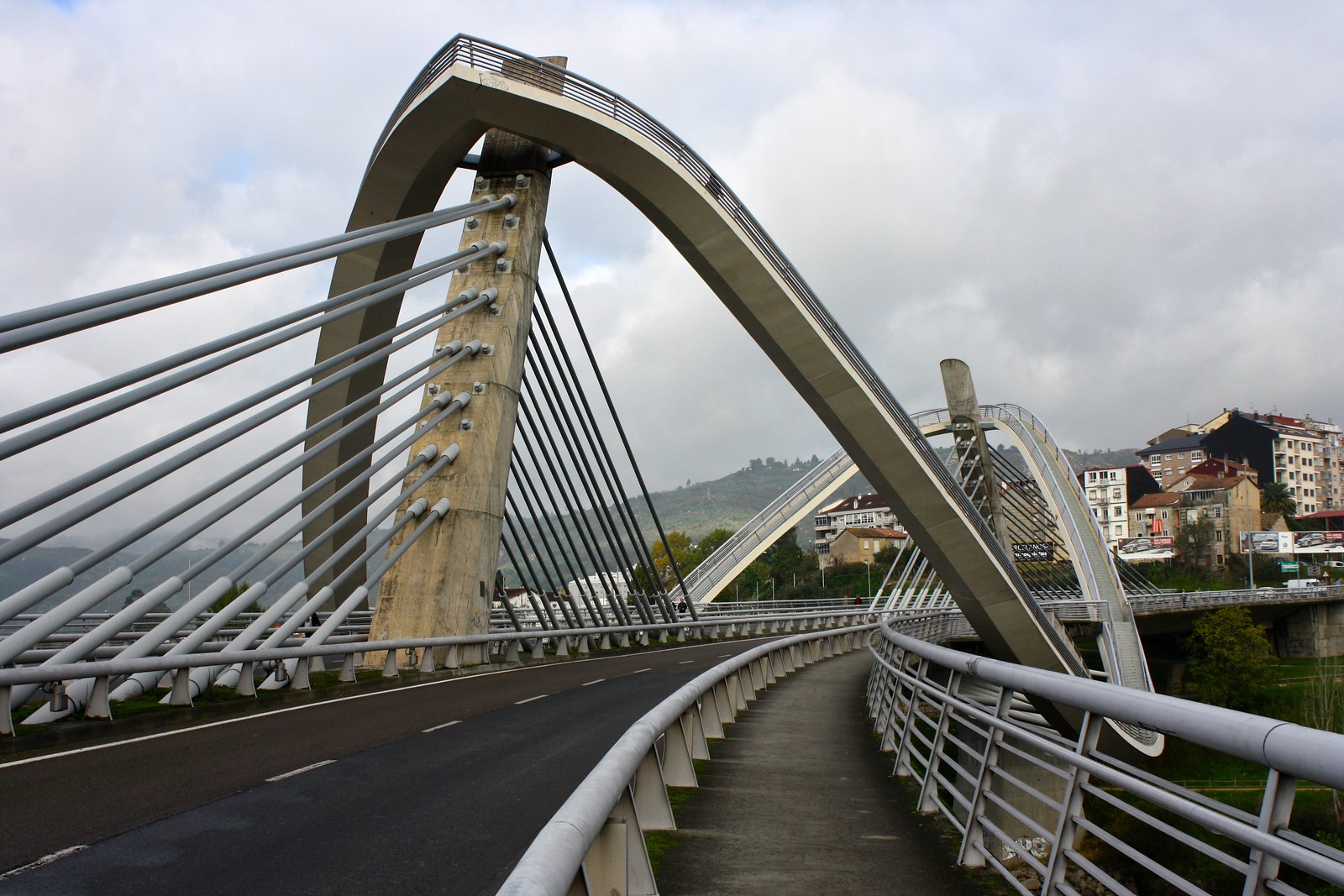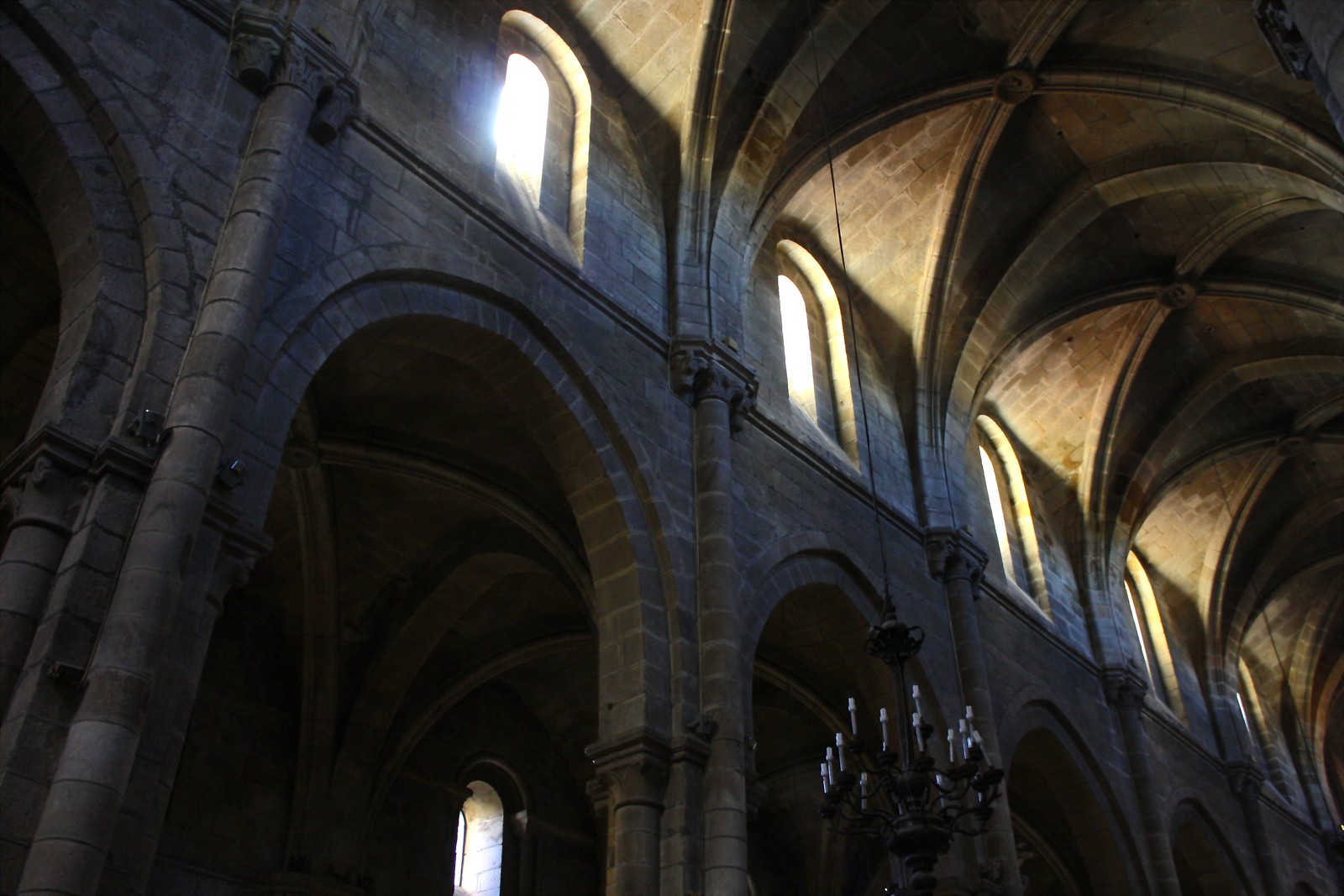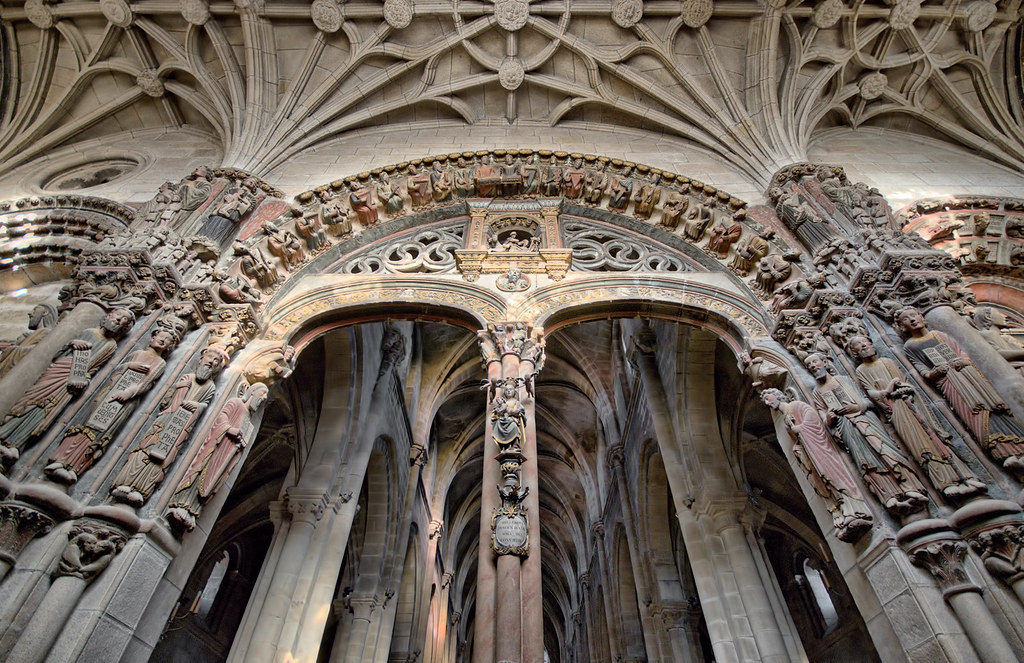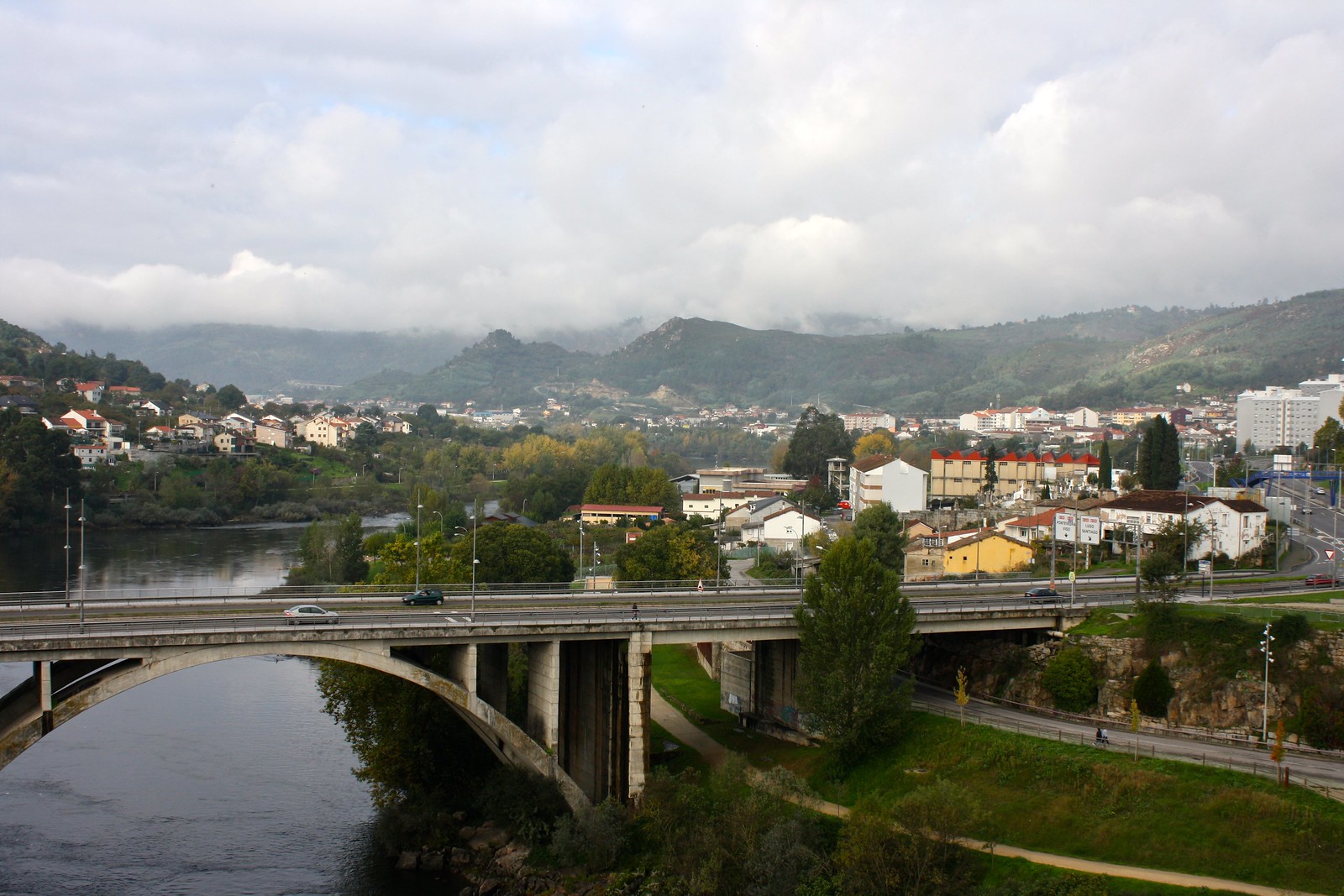In early November, my apartment-mate and I took a spur-of-the-moment weekend trip to the city of
Ourense. Pronounced “oe-oo-REHN-say” [owˈɾɛn.se], it’s the capital of Galicia’s only province without a coast. However disappointing that may sound to you, it shouldn’t be, because Ourense province is actually one of the most beautiful parts of Spain and even has its own Grand Canyon, the
Cañon do Sil. I had little-to-no expectations about Ourense the capital when I came, but I was very, very impressed by this place that no one (apart from my bilingual coordinator who is
from the province) ever says boo about when talking about Galicia.
Ourense seems like a city that tourism is just about to uncover, but which is still relatively anonymous. I can expect that the arrival of the AVE (high-speed long distance trains) will bring many visitors from Madrid on weekends, but for now, it’s got very few visitors, so you’ll feel like you have the entire city to yourself. So what to do when you’re there? I recommend you try these six activities, but make sure to take a few hours every day to relax at the natural hot springs (#6)!
1) Ride the high-speed train from Santiago de Compostela or A Coruña
Slowly but surely, high-speed rail is making its way from Madrid to every corner of the Iberian peninsula. High-speed service came to Sevilla in 1992 and to Barcelona in 2008. Today, you can take the AVE train from the Mediterranean to the
meseta, the central Castilian plateau. More “spokes” of Spain’s high-speed network continue to branch out from the hub in Madrid to places like wild-west Extremadura, the far-northern coast, and eastern Andalucía. Galicia—Spain’s fifth-most populous region—is also set to join the high-speed world…but construction between the end of the northern line and the region has gone very slowly, and it could be until the end of the decade that this part is finished.
However, most of the work
within Galicia is already done, and you can now travel between A Coruña on the coast, to Santiago de Compostela the capital,
southwest to Ourense in a little over an hour—formerly a two-to-three-hour train ride. The train tracks pass through numerous tunnels and cross dozens of canyons on great bridges, making for a quick-but-lovely journey through the prettiest landscapes in Spain.
2) Enjoy (or endure) the extreme weather
Ourense is different from the rest of the region in that its weather makes you feel like you’re in central or southern Spain rather than mild, rainy Galicia. Because of its location in a river basin, surrounded by mountains on all sides, Ourense enjoys a distinct “micro-climate” from the rest of the region—frigid and icy in the winter, sizzling hot in the summer—so much so that it’s one of the handful of cities in Spain that vie for the dubious honor of being
la sartén de España—
Spain’s Frying Pan.
If you get off the train here in the winter, bundle up, and if you come in the summer, bring an, uh, egg…to fry on the sidewalk. (Just kidding!)
3) Eat up free tapas with your drink
Although it isn’t the custom to give free
tapas (little appetizers) with whatever you get to drink in Madrid, Barcelona, Valencia, western Andalucía, or the Basque Country, most everywhere else in (non-touristy) Spain still holds on to this centuries-old tradition, and
Ourense is no exception. At lunch, go all-out with a big, two-course
menú del día, but then at dinner, go from bar to restaurant and fill up on tapas like a slice of
empanada (meat pie), some chorizo and bread, or chunks of fried potato with garlicky ali-oli sauce.
4) Cross the Miño River on beautiful bridges
Ourense is split in half, north and south, by the Miño River. To the north lies the train station and much of the Franco-era new town, and to the south you can find the small historic core. Half a dozen or so bridges link the two halves together, but two are particularly fun to cross the river on.
First you have the
Roman Bridge, a bit of a misnomer for what is actually a medieval-era bridge that was built on Roman foundations. The official (and more appropriate) name is
Ponte Vella, Galician for “old bridge.” Five pointed arches span the river and bring the bridge to a magnificent summit. Walk across this pedestrianized stone bridge at night and imagine yourself a pilgrim resting from a long day’s hike along the Camino de Santiago. After all, the
Vía de la Plata—the pilgrimage route that links Santiago de Compostela with Sevilla—passes through Ourense.
The city’s other great bridge crosses the Miño to the west and was built over a decade ago: the
Millennium Bridge. A modern construction that carries most of the car traffic in and out of town, it offers a wavy path for people to make a circuit above, below, and around the bridge. From the highest spot on the suspended lookout point, you can take in river, the “Roman” Bridge, and the entire city as it folds out across the river basin.
5) Stroll through the simple, serene cathedral
Although Ourense’s old town isn’t very big or outstanding, it does have old-fashioned stone-laid streets, a fine central square colonnaded on all four sides, and
a simple, yet beautiful cathedral. Ourense has history dating back to Germanic barbarian kingdoms and the Roman Empire, but the city was repeatedly destroyed by Moors, Vikings, and Moors again up to the year 1000 CE. Decades later, Catholic leaders ordered a new cathedral to be built in the city that was being re-settled, and this is the church that comes down to us today. The cathedral is without a doubt Romanesque in style: semicircular-arched doorways, heavy, solid columns and walls, and one-of-a-kind column capitals abound.
But you can tell that the Romanesque was beginning to transform into the light-filled, vertical Gothic style. Art historians call this era the
“late Romanesque,” and you can see it here in Ourense: the vaulting in the ceiling has squeezed a rounded arch into a pointy, triangular tip, and light pours in from upper clerestory windows. Wonder at the explosion of architectural creativity that was about to happen at this point in time, and then wander to the central crossing where a heavenly, octagonal Gothic
“lantern tower” (added a few centuries later) lets white light enter inside.
Inside the narthex or western foyer of the church, you can admire the
Pórtico do Paraíso—the Paradise Portico. Like the cathedral of Santiago de Compostela’s
Pórtico da Gloria, Ourense’s is similarly a treasure of medieval sculpture surrounding three portals. But Ourense’s portico actually conserves its medieval polychrome paint, which is currently being restored and due to be unveiled early next year.
6) Relax in dozens of hot spring pools
I saved the best for last. If (when?) tourism picks up in Ourense, the city’s main draw will be its
thermal baths that feed off of natural hot springs. Although there are some drinking fountains and a pool in the old town (
As Burgas), the majority of the baths are clustered along the river to the northwest. There are free public pools as well as fancier, spa-like private ones. I tried out the privately-run Chavasqueira and Outariz
termas, but smaller public ones are right outside both. The private ones had a wide selection of pools of varying temperatures and were extremely relaxing. The natural spring water is supposed to be beneficial for ailments, your skin, and general achiness because of its mineral content. Plus, hot water is nice! For around 5€ an entrance, I got one to two hours to spend in these places for “
el relax,” as they said.
The Chavasqueira pools are closest to the old town; just follow the northern bank of the river west past the Millennium Bridge. Outariz, however, is a good hour’s walk or more from Chavasqueira. Thankfully, the municipal bus system has a line that runs back and forth between all the pools and fountains along the river—wait for
bus #19 at Praza Maior and hop on the little tourist train when it shows up. It doesn’t pass by very often in off-season, however; so for Outariz, you can also catch
bus #5—just make sure to cross the
pasarela (pedestrian bridge) that connects the bus stop (south bank) and the baths (north bank).
Have you ever been to Ourense before? Or even heard of it? What are some other best-kept secrets in northern Spain? Tell me what you think in the comments below!



